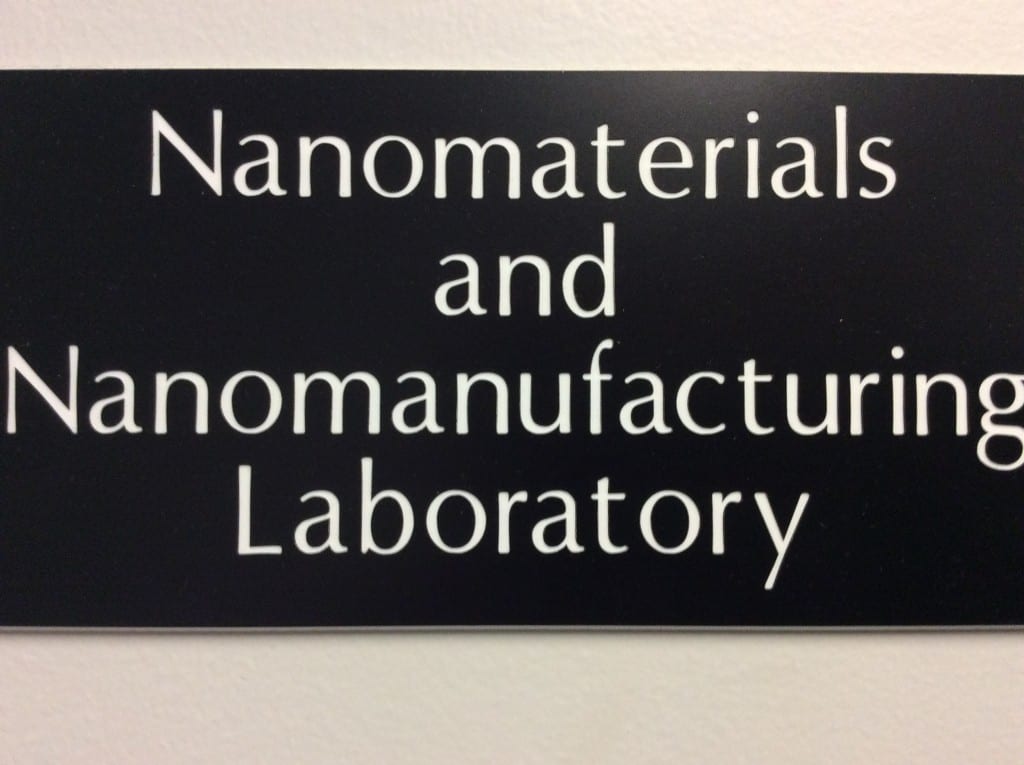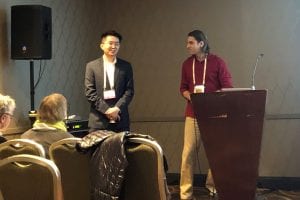
NNL researchers presented their works in 2018 international meetings and conferences
NNL researchers presented their works in 2018 International Meetings and Conferences
MRS Fall 2018 Meeting and Exhibitions (November 25-30, 2018)
Zhaotong (PhD Candidate) and Ryan (PhD Candidate) presented “Preparation of Geopolymer from Red Mud Slurry and Class F Fly Ash and Its Behavior at Elevated Temperature” on an invited talk of Professor Jianyu Liang (BI01.08.01) of the MRS Fall 2018 meeting and exhibitions, the key forum to present research to an interdisciplinary and international audience.

Presentation Abstracts – Today, the concrete industry is one of the largest producers of greenhouse gases, emitting 5% of the man-made CO2 every year. To reduce this carbon footprint, geopolymers have attracted extensive interest as potential alternatives to Portland cement (OPC) the material traditionally used in structural concrete. Depending on the synthesis recipe of the geopolymer, the manufacturing process may be much less energy intensive and have a very small carbon footprint when compared with the OPC production process. Many different raw materials have been used to synthesize geopolymers, such as various natural minerals and industrial byproducts that are high in both amorphous silica (SiO2) and alumina (Al2O3). A new synthesis method for geopolymer ,sourced from two hazardous industrial wastes, red mud (RM) slurry and fly ash (FA) powder, has been developed in this study. Thermal properties including mechanical behavior, thermal shrinkage, weight loss, microstructure change, and crystallization of the RMFA geopolymers were investigated. After curing for fourteen days, RMFA geopolymers exhibited compressive strengths greater than 17MPa. Reaching this strength is significant, since the ACI (American Concrete Institute) building standards require a minimum of 17MPa for use in structural cement. It should also be noted that in geopolymer materials, as with OPC, the strength continues to increase over time. Thermal tests found the materials to be thermally stable up to 600°C, with the retention of mechanical strength. The synthesis process developed in this study provides significant advantages: the removal of the energy-intensive drying process and the repurposing of two overabundant industrial wastes. (MRS Fall 2018 – BI01.08.01)
In the same meeting, Professor Liang served as the session chair of a symposium BI01.07: Sustainability and Materials for Energy and Water.
Ryan (PhD Candidate) talked a poster on “Direct Write of Micro-Circuitry via Micro Cold Spray” (PM03.07.12), discussed his experimental and computational works on the impact of nozzle design and process gas temperature on the final deposition using micro cold spray.
Wisawat (PhD Candidate) presented his works on “Electrospinning Process for Lithium-Ion Battery Separator” (ET07.07.08), talked about controlling an electrospinning process to fabricates separator for lithium-ion battery (LIB) with desired properties (link: MRS Meeting Scene – Scientific Highlights). He presented two posters in extended details of the electrospinning process for LIB separator, “Multifunctional Electrospun Multilayered Separator for Flexible Battery Applications” (BM08.15.17) and “Electrospun Polymer-Ceramic Composite Separator for Structural Battery Applications” (ET03.06.15).
NANO 2018 XIV International Conference on Nanostructured Materials (June 24-29, 2018)
Wisawat (PhD Candidate) attended the Nano 2018 at the City University of Hong Kong, SAR. He presented his poster on “Multifunctional Electrospun Separators for Structural Battery Applications” (ST3-P03), discussed the using of electrospinning process to fabricate separator for structural lithium-ion battery in a symposium of Nanomaterials for Energy and Environmental Applications.
